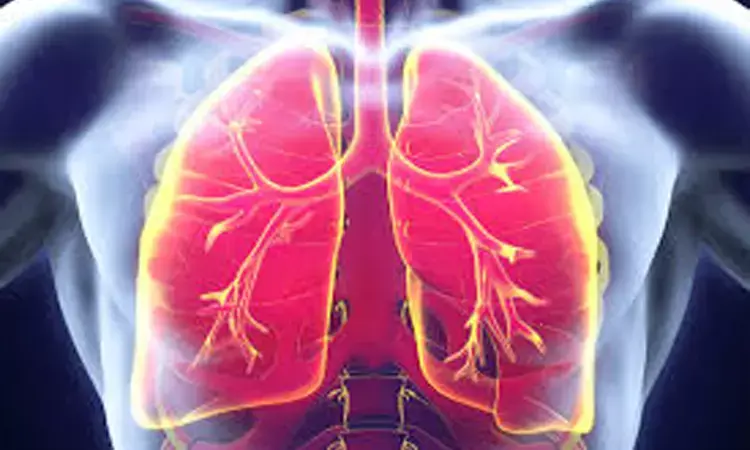- Home
- Medical news & Guidelines
- Anesthesiology
- Cardiology and CTVS
- Critical Care
- Dentistry
- Dermatology
- Diabetes and Endocrinology
- ENT
- Gastroenterology
- Medicine
- Nephrology
- Neurology
- Obstretics-Gynaecology
- Oncology
- Ophthalmology
- Orthopaedics
- Pediatrics-Neonatology
- Psychiatry
- Pulmonology
- Radiology
- Surgery
- Urology
- Laboratory Medicine
- Diet
- Nursing
- Paramedical
- Physiotherapy
- Health news
- Fact Check
- Bone Health Fact Check
- Brain Health Fact Check
- Cancer Related Fact Check
- Child Care Fact Check
- Dental and oral health fact check
- Diabetes and metabolic health fact check
- Diet and Nutrition Fact Check
- Eye and ENT Care Fact Check
- Fitness fact check
- Gut health fact check
- Heart health fact check
- Kidney health fact check
- Medical education fact check
- Men's health fact check
- Respiratory fact check
- Skin and hair care fact check
- Vaccine and Immunization fact check
- Women's health fact check
- AYUSH
- State News
- Andaman and Nicobar Islands
- Andhra Pradesh
- Arunachal Pradesh
- Assam
- Bihar
- Chandigarh
- Chattisgarh
- Dadra and Nagar Haveli
- Daman and Diu
- Delhi
- Goa
- Gujarat
- Haryana
- Himachal Pradesh
- Jammu & Kashmir
- Jharkhand
- Karnataka
- Kerala
- Ladakh
- Lakshadweep
- Madhya Pradesh
- Maharashtra
- Manipur
- Meghalaya
- Mizoram
- Nagaland
- Odisha
- Puducherry
- Punjab
- Rajasthan
- Sikkim
- Tamil Nadu
- Telangana
- Tripura
- Uttar Pradesh
- Uttrakhand
- West Bengal
- Medical Education
- Industry
High-risk PE patients have high mortality rates among patients with hemodynamic collapse

In a recent study from the Pulmonary Embolism Response Team (PERT) Consortium Registry found the contemporary care patterns and outcomes for high-risk pulmonary embolism (PE) patients. The findings of the study were published in the Journal of the American College of Cardiology.
This research comprised a total of 5,790 patients by meticulously categorizing the individuals who present with intermediate-risk PE, high-risk PE, and catastrophic PE and involved cases with hemodynamic collapse.
1,442 out of the total patients in the study presented with high-risk PE showed that advanced therapies were more frequently employed in this subgroup compared to those with intermediate-risk PE. But, the ground reality unveiled a high in-hospital mortality rates (20.6%) and a higher incidence of major bleeding (10.5%) in PE patients with high-risk. The factors like the use of vasopressor, extracorporeal membrane oxygenation utilization, clot-in-transit identification and malignancy emerged as major important contributors to the in-hospital mortality.
Also, catastrophic PE patients constituted to 13.7% of high-risk PE cases and they faced even graver outcomes with significantly higher in-hospital mortality rates (42.1%). The extracorporeal membrane oxygenation and systemic thrombolysis were more commonly utilized in the cases of catastrophic PE.
This study highlights the urgent need for enhanced strategies in managing high-risk PE patients. With mortality rates reaching alarming levels specially in the catastrophic cases. This findings of this study call for a reevaluation of the current practices and the development of interventions that are more effective to improve outcomes in patients.
Reference:
Kobayashi, T., Pugliese, S., Sethi, S. S., Parikh, S. A., Goldberg, J., Alkhafan, F., Vitarello, C., Rosenfield, K., Lookstein, R., Keeling, B., Klein, A., Gibson, C. M., Glassmoyer, L., Khandhar, S., Secemsky, E., & Giri, J. (2024). Contemporary Management and Outcomes of Patients With High-Risk Pulmonary Embolism. In Journal of the American College of Cardiology (Vol. 83, Issue 1, pp. 35–43). Elsevier BV. https://doi.org/10.1016/j.jacc.2023.10.026
Neuroscience Masters graduate
Jacinthlyn Sylvia, a Neuroscience Master's graduate from Chennai has worked extensively in deciphering the neurobiology of cognition and motor control in aging. She also has spread-out exposure to Neurosurgery from her Bachelor’s. She is currently involved in active Neuro-Oncology research. She is an upcoming neuroscientist with a fiery passion for writing. Her news cover at Medical Dialogues feature recent discoveries and updates from the healthcare and biomedical research fields. She can be reached at editorial@medicaldialogues.in
Dr Kamal Kant Kohli-MBBS, DTCD- a chest specialist with more than 30 years of practice and a flair for writing clinical articles, Dr Kamal Kant Kohli joined Medical Dialogues as a Chief Editor of Medical News. Besides writing articles, as an editor, he proofreads and verifies all the medical content published on Medical Dialogues including those coming from journals, studies,medical conferences,guidelines etc. Email: drkohli@medicaldialogues.in. Contact no. 011-43720751


